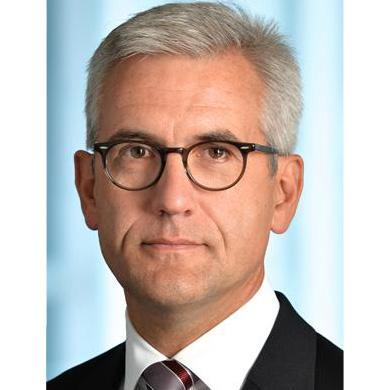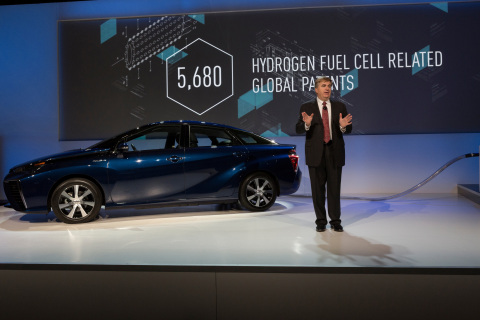
by Gary Mintchell | Mar 30, 2015 | Automation, Internet of Things, News, Operations Management, Technology
Developing testbeds for testing development of technology extensions seems to be hot right now. The Smart Manufacturing Leadership Coalition has a couple going in conjunction with US government money. There is a bid out from the US government for development of some more, also related to energy efficiency.
The Industrial Internet Consortium announced its first energy-focused testbed: the Communication and Control Testbed for Microgrid Applications. Industrial Internet Consortium member organizations Real-Time Innovations (RTI), National Instruments, and Cisco, are collaborating on the project, working with power utilities CPS Energy and Southern California Edison. Additional industry collaborators include Duke Energy and the power industry organization – Smart Grid Interoperability Panel (SGIP).
I recently saw where an analyst positioned the IIC with the German Industry 4.0 initiative–while ignoring the US Smart Manufacturing group altogether. These advanced manufacturing strategies are showing some growth. Both of these have commercial technology companies solidly behind them. I would think that they will have more impact in the long run than SMLC. But we’ll see.
Here is some background from the IIC press release. “Today’s power grid relies on a central-station architecture not designed to interconnect distributed and renewable power sources such as roof-top solar and wind turbines. The system must over-generate power to compensate for rapid variation in power generation or demands. As a result, much of the benefit of renewable energy sources in neighborhoods or businesses is lost. Efficiently integrating variable and distributed generation requires architectural innovation.”
The goal of the Communication and Control Testbed is to introduce the flexibility of real-time analytics and control to increase efficiencies in this legacy process – ensuring that power is generated more accurately and reliably to match demand. This testbed proposes re-architecting electric power grids to include a series of distributed microgrids which will control smaller areas of demand with distributed generation and storage capacity.
These microgrids will operate independently from the main electric power grid but will still interact and be coordinated with the existing infrastructure.
The testbed participants will work closely with Duke Energy, which recently published a distributed intelligence reference architecture, as well as SGIP to help ensure a coordinated, accepted architecture based on modern, cross-industry industrial internet technologies.
The Communications and Control framework will be developed in three phases that will culminate in a field deployment that will take place at CPS Energy’s “Grid-of-the-Future” microgrid test area in San Antonio, Texas.
The initial phases will be tested in Southern California Edison’s Controls Lab in Westminster, CA.

by Gary Mintchell | Mar 11, 2015 | Leadership, Productivity
Last week I was driven to complete a lot of work in preparation for leaving town for a week. My energy level shot up several notches in intensity. My productivity was at a new level I haven’t seen for a while.
Much important work was accomplished. Items disappeared from my to do list at a gratifying pace.
Physicists know that energy is the underlying physical force in the universe. We know that energy is an underlying force for success in our lives.
Time management skills are good. Especially when tied to thoughtful construction of to do lists. But those skills don’t get things done. They organize you. Doing gets things done. And to do requires energy.
Ramping up energy has amazing benefits. After three days of higher personal energy:
- My weight finally dropped below the plateau
- My meditations, being active, brought more insight
- Things got done
- A consulting session with a client was fruitful
- I was able to work through a travel schedule crisis calmly and effeciently
I teach young (and old) soccer referees to show energy on the pitch. When the players see that you have energy, they respond. They respect referees who are working hard. When you exhibit great energy, you’ll be in better positions to make better calls. You’ll manage the game better.
Same with our life in general.
That was good yesterday. Now what about tomorrow?

by Gary Mintchell | Mar 5, 2015 | Automation, Events, News, Process Control, Technology

Ulrich Spiesshofer, ABB CEO
I’m sad that I could not make it to the 2015 edition of Automation and Power World, ABB’s user group meeting in Houston. That there is a lot of energy and information, I have no doubt.
There has not been much news popping up in my news feeds this week. Control Global, as usual, has the official show daily. Most interesting would have been CEO Ulrich Spiesshofer’s keynote explaining the company’s position.
ABB has faced some financial difficulties over the past 18 months or so. It has shed a number of businesses. Several key executives were moved from the automation business to the power business in order to bolster its strength.
Here are two interesting stories from the conference compliments to my friends Jim Montague and Mike Baccidore.
ABB CEO Affirms Commitment to Responsible Growth
Building the Business Case for Industrial IoT

by Gary Mintchell | Jan 13, 2015 | Automation, Education, Internet of Things, Leadership, News, Operations Management, Software, Technology
 Let the debates begin! Jim Pinto has published his 2015 prognostications in the latest JimPintoBlog.
Let the debates begin! Jim Pinto has published his 2015 prognostications in the latest JimPintoBlog.
Check out his entire list and enter your thoughts on his blog. I’ll highlight some of his thoughts and add some of my own.
Automation Industry Trends
New inflection points will change the leadership lineup.
GM—I do not expect big changes in the automation leadership lineup. Mitsubishi, Rockwell Automation and Siemens are dominant in their home areas and fighting it out in China and India. Siemens has a bit of an edge having been international for a longer period of time. But as automation commoditizes, perhaps some new entrants will grab some share. If Bedrock Automation can market well, watch out for it. On the process side, Invensys is gone, absorbed by Schneider Electric. So the process automation business becomes even more of a minor part of the overall businesses, like ABB, Emerson Process Management, and Yokogawa. The only interesting situation in that market area is Honeywell Process Solutions. But I don’t really expect any change there.
I think 3D printing (additive manufacturing) is a game changer and one of the most important things from last week’s CES. It’s not strictly automation, though.
From Jim:
- Internet of Things (IoT): The Industrial Internet will transform the next decade. Intelligent sensors and networks will take measurement and control to the next level, dramatically improving productivity and efficiencies in production. Growth in 2015 will be bottom-up, not top-down.
- Smaller, Cheaper Sensors: Everyone is looking for or working on smaller, cheaper sensors for widespread use in IoT. Expect fast growth for sensors this year.
- Cloud Computing: Cloud computing technology reduces capital expenditures and IT labor costs by transferring responsibility to cloud computing providers, allowing secure and fast access for data-driven decisions. The significant gains in efficiency, cost and capability will generate continuing rapid growth in 2015.
- 3D Printing in Manufacturing: Today, do-it-yourself manufacturing is possible without tooling, large assembly lines or multiple supply chains. 3D printing is reshaping product development and manufacturing.
- Mobile Devices in Automation: The use of WiFi-connected tablets, smartphones and mobile devices is spreading quickly. Handheld devices reduce costs, improve operating efficiency, boost productivity and increases throughput. More and more employers are allowing BYOD (bring your own device).
- Robotics: Millions of small and medium-sized businesses that will benefit from cheaper robots that can economically produce a wide variety of products in small numbers. The next generation of robots will be cheaper and easier to set up, and will work with people rather than replace them.
- Control Systems Security: In spite of apprehensions over consumer security breach events, industrial cyber security has mostly been ignored due to lack of understanding of solution costs. Many companies struggle to justify what is seen as added cost to secure their operation. Major security breaches will change this attitude.
Business Technology Trends
Gartner’s top trends for 2015 (3) cover three themes: the merging of the real and virtual worlds, the advent of intelligence everywhere, and the technology impact of the digital business shift. There is a high potential for disruption to the business with the need for a major investment, or the risk of being late to adopt.
Here are the top Gartner trends:
- Computing Everywhere: As mobile devices continue to proliferate, there will be increased emphasis on the needs of the mobile users. Increasingly, the overall environment will need to adapt to the requirements of the mobile user
- 3D Printing: Worldwide shipments of 3D printers are expected to grow 98 percent in 2015, followed by a doubling of unit shipments in 2016, reaching a tipping point over the next three years.
- Advanced, Pervasive and Invisible Analytics: The volume of data generated by embedded systems generates vast pools of structured and unstructured data inside and outside the enterprise. Organizations need to deliver exactly the right information to the right person, at the right time, so analytics will become deeply, but invisibly embedded everywhere.
- Smart Machines: Advanced algorithms will allow systems to understand their environment, learn for themselves, and act autonomously.
- Cloud Computing: The convergence of cloud and mobile computing will continue to promote the growth of centrally coordinated applications that can be delivered to any device. Applications will evolve to support simultaneous use of multiple devices.
- Risk-Based Security and Self-Protection: All roads to the digital future lead through security. Organizations will increasingly recognize that it is not possible to provide a 100 percent secured environment. They will apply more-sophisticated risk assessment and mitigation tools. Every app needs to be self-aware and self-protecting.
GM—My take is that the biggest thing in this area is analytics combined with improved visualizations and dashboards that take advantage of smartphones and tablets. Cloud is here. IoT is here. Security will forever be an important part of business.
2015 Consumer Electronics Show
- Wearable Devices: The time is right for wearable devices.
- Practical green tech.
- Sustainability and transportation: Tesla Model X all-electric SUV with the doors that open like a Delorean. Electric-assisted bike technology; electric scooter with swappable batteries and dashboard analytics.
- Kid-Tech: Apps to help teach children science, math, and tech. Fun little robots that teach kids computer programming concepts. Drawing, design, and color patterns to help kids learn about robotics and computer programming.
GM—as I’ve already written, autonomous vehicles could be a game changer and 3D printing was huge. The outlier is drones. Who knows where that might go?
Future Prognostications 2015-2025
Here are ten prognostications for the next decade, picked from the World Future Society (7) forecasts, plus other readings and discussions with Futurists.
- – Education: A major shift to on-line education and certification is already happening, and will continue steadily.
- – Jobs: Advances in artificial intelligence will eliminate human workers.
- – Robot Work Force
- – Middle Class Impasse: delaying retirement, income stagnating
- – Driverless cars
- – Speak to Computers.
- – Robotic Augmentation (exoskeletons)
- – Health & Well-being: sensors everywhere
- – Brain scanning will replace juries
- -Energy: Futurist Ray Kurzweil notes that solar power has been doubling every two years for the past 30 years while costs have been dropping. He says solar energy is only six doublings (less than 14 years) away from meeting 100% percent of energy needs.
GM-There are going to be some disruptions and huge benefits from a number of these. Autonomous vehicles and health advances are fantastic. I wish education would change more quickly that it does. Even those who wish to disrupt education mainly only have the political agenda of “teachers’ unions” and driving down salaries. (Why is it a political agenda to drive down salaries. Shouldn’t we be trying to improve everyone’s lot in life?)
I’m not a fan of Kurzweil. 100% is not realistic—maybe residential, but not everything. Don’t think there’s enough volts there!
I think we are going to need those labor-saving, productivity-enhancing advancements because we’re actually facing a labor shortage in 10 years. Time to start thinking farther ahead.
Humans have a way of adapting to thrive. I am optimistic about the future!
Yes, Jim, I’m with you there!

by Gary Mintchell | Jan 6, 2015 | News
 News has come in from the International CES show in Las Vegas (the show formerly known as the Consumer Electronics Show). It sounds more like a Detroit Auto Show than consumer electronics. Maybe the reason for the name change.
News has come in from the International CES show in Las Vegas (the show formerly known as the Consumer Electronics Show). It sounds more like a Detroit Auto Show than consumer electronics. Maybe the reason for the name change.
Toyota is opening the door to the hydrogen future for automobiles, making available thousands of hydrogen fuel cell patents royalty free. Announced at the 2015 International CES Show, this Toyota initiative is anticipated to spur development and introduction of innovative fuel cell technologies around the world.
Pollution reduction
Earl Nightingale developed the personal development industry back in the 50s and 60s. One of his recurring themes was the common sense of powering cars with hydrogen. Hydrogen is plentiful. The byproduct of “burning” it is non-toxic.
Well, Toyota has been working on hydrogen power and held a major press conference at CES.
[Aside: I’ve thought some about directions in trade press relative to how you might digest your news—especially how marketers want to capture that media to get their message out in a seemingly objective format. My first notice of this press conference was a notification on my old Tekzilla podcast icon. The new owners of Revision 3 and Tekzilla closed the podcast and fired the entire staff except for one young woman with obvious attributes designed to attract 20-something tech geek guys. (She’s also very smart, by the way.) Well, Shannon appeared on a Tekzilla Daily this morning looking very uncomfortable. She was talking about how great this news was as I thought, “Hmm, Toyota has been a sponsor of Tekzilla.” Sure enough, this special report on a dead podcast channel was sponsored by, you guessed it, Toyota.]
Patents
I am not in Las Vegas, so this news comes primarily from Toyota’s press release.
Toyota will invite royalty-free use of approximately 5,680 fuel cell related patents held globally, including critical technologies developed for the new Toyota Mirai. The list includes approximately 1,970 patents related to fuel cell stacks, 290 associated with high-pressure hydrogen tanks, 3,350 related to fuel cell system software control and 70 patents related to hydrogen production and supply.
“At Toyota, we believe that when good ideas are shared, great things can happen,” said Bob Carter, Senior Vice President of Automotive Operations at Toyota Motor Sales, USA Inc. “The first generation hydrogen fuel cell vehicles, launched between 2015 and 2020, will be critical, requiring a concerted effort and unconventional collaboration between automakers, government regulators, academia and energy providers. By eliminating traditional corporate boundaries, we can speed the development of new technologies and move into the future of mobility more quickly, effectively and economically.”
Toyota notes that it has a long history of opening its intellectual properties through collaboration, and was instrumental in facilitating the widespread adoption of hybrid vehicles by licensing related patents. This announcement represents the first time that Toyota has made its patents available free of charge and reflects the company’s aggressive support for developing a hydrogen-based society.
This Toyota initiative builds on previous commitments, including substantial financial support for the development of a hydrogen-fueling infrastructure in California and the northeastern United States. In May 2014, Toyota announced a $7.3 million loan to FirstElement Fuels to support the operations and maintenance of 19 hydrogen fueling stations across California. In November 2014, Toyota announced a collaboration with Air Liquide to develop and supply a phased network of 12 state-of-the-art hydrogen stations targeted for New York, New Jersey, Massachusetts, Connecticut and Rhode Island.
The hydrogen fuel cell patents will be made available to automakers who will produce and sell fuel cell vehicles, as well as to fuel cell parts suppliers and energy companies who establish and operate fueling stations, through the initial market introduction period, anticipated to last until 2020. Companies working to develop and introduce fuel cell busses and industrial equipment, such as forklifts, are also covered. Requests from parts suppliers and companies looking to adapt fuel cell technology outside of the transportation sector will be evaluated on a case-by-case basis.












